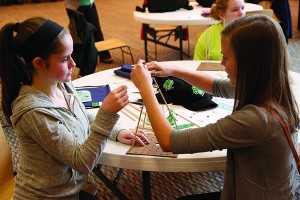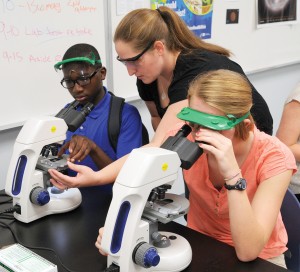
The need for food preservation classes offered by Shannon Carter, left, and other Extension professionals rose sharply in 2015 after botulism struck a church potluck.
It was a church potluck like any other. But within days, botulism from improperly home-canned potatoes killed one woman and hospitalized 24 others.
Shannon Carter, Fairfield County family and consumer sciences educator, and other Ohio State University Extension professionals jumped into action in April 2015, providing urgently needed information to the community, media and health department officials.
In Fairfield County, Carter increased fivefold the number of food preservation classes she offered in 2015.
Aubry Shaw, daughter-in-law of Kim Shaw, who died from the botulism outbreak, participated in several of the classes.
Deb Kilbarger, registered sanitarian and food program supervisor with the Fairfield Department of Health, agrees.
“Anyone who cans (food) should take the class,” Kilbarger said. “Even if you’ve done it forever, there might be a safer way. Extension is the only place I’m aware of that offers classes like this. Hopefully, these classes will prevent anything like this from happening again.”
ESSENTIALS
In 2014, OSU Extension offered 181 food safety classes to 2,458 participants in 50 counties. Of those who took home food preservation classes:
- 78 percent reported they would always use current, official canning recommendations, which is up from 16 percent who, before attending the class, said they would always do so.
- 67 percent reported they would always acidify tomatoes before water-bath canning them — a vital food safety precaution — which is up from 16 percent before the class.
- 66 percent reported they would always use a pressure canner to process low-acid foods, which is up from 22 percent before the class







